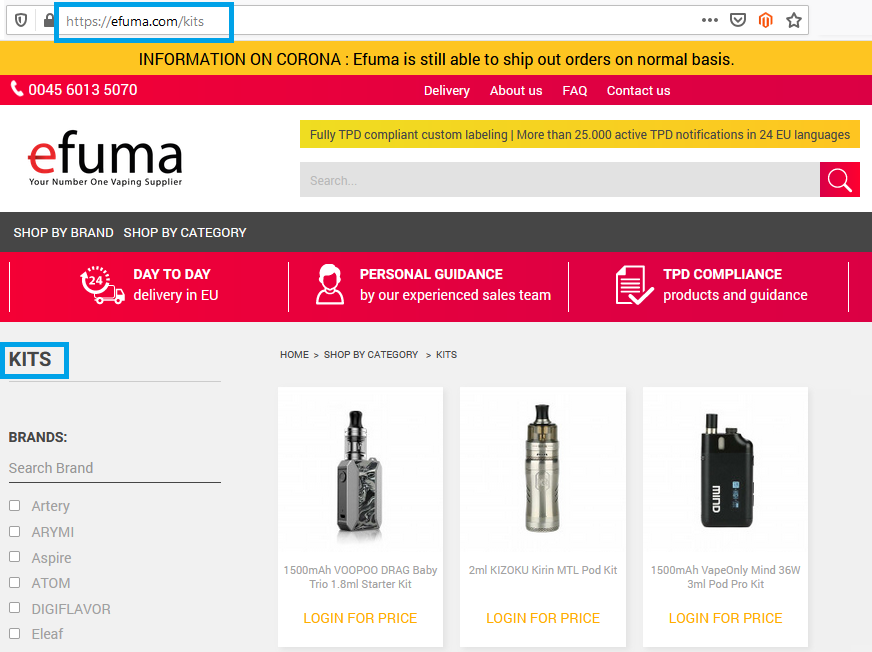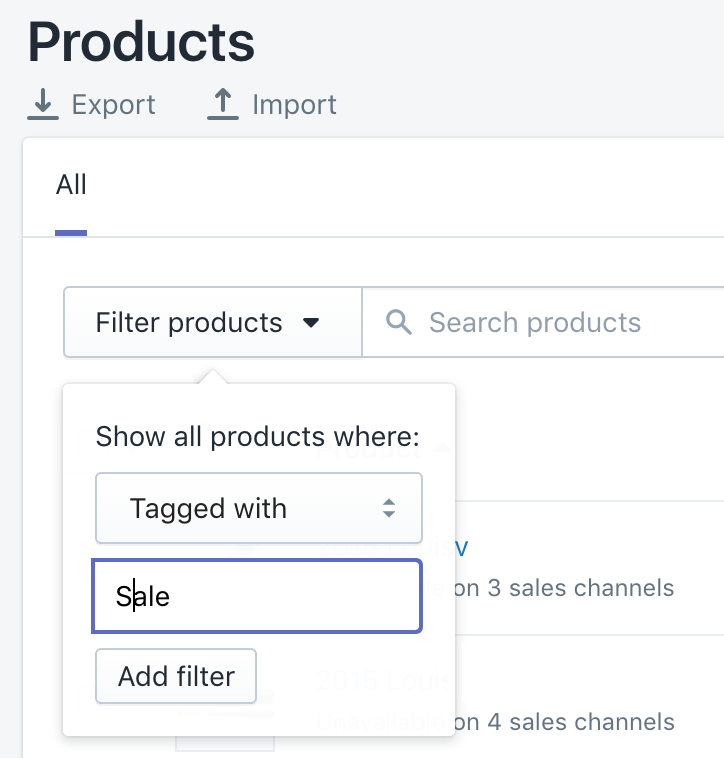Smoothly Migrate Magento to Shopify Platform
March 31, 2020 | 08 min read
Introduction
Have you decided to move all data from Magento to Shopify? Looking for the most convenient way to do this ?
OSC will help you achieve fast and accurate migration. The method is fully automated, so it will not take longer that a few hours to move all info. Therefore, it is not mandatory to have a strong level of technical skills. Switch your data to OSC and feel the benefits of operating a Shopify store right now.
As our team of developers faced the challenge of moving data from Magento to Shopify, we decided to study this subject extensively.
This has helped us to better understand the problems that entrepreneurs experience in the migration process. This expertise has supported our collaborators in this method. It will be helpful to you, if you are experiencing the same challenge.
How to Migrate Magento to Shopify
1. Product Migration from Magento to Shopify
The first thing you will learn is that the product design of Shopify is really simple . Not in the wrong way. Just in a very confusing way, “Why don’t you have configurable products.” Once you get over that, you’ll continue to fit in as it will make you more versatile. There is no such thing as importing separate files for items, ratings, categories, etc. It’s all done in one CSV, one row. I’m going to ignore online catalogs that are “easy” product categories only and calling BS to any digital service that claims you can move the product from Magento to Shopify without any manual intervention or insane problems. You were alerted.
Here’s the reason :
- uRapidflow doesn’t exist in shopify world.
- The import “key” to shopify products is the url key, not the SKU. Translate: when importing product connections, you don’t do this through a SKU parent setup, you do this through a custom url key.
- Configurable products: Shopify does not have configurable parent items that serve as a way of associating siblings. All Shopify products are SKUs that can be marketed. Once you have developed your first SKU base package, add additional children to the same first product utilizing variants.
- Pricing : Are you really old school magento, where you handle a basic SKU price by +/- difference from your configurable parent. If you are then these need to be converted into real SKU rates.
- Images : 50% of Magento sites i served on had photos placed on configurable goods where the other 50% were on simple products. Let’s assume you’ve been on a simple product this will make your life a lot easier when you import to shopify because the import file is flat. Translation: each picture for your simple product needs to be each ia a single row. In fact, each alternate image goes on its own row as well.
- Attributes Configuration : The uRapidflow product.configurable parent SKU field will be your best friend for this. Before making this a full article on product migration, you will need to define your Magento attributes. That will serve as your “options” in Shopify and switch them to the choices columns in Shopify import instead of tags. For example, if you offer shirts and pants that have both color size as super configurable attributes in Magento, and color is the first option for shirts but the second selection for pants, then you’ll need to do some excel or DB wizardry to handle this. Alternatively, if you just mass-associate the color column as choice : in your Shopify import, then the color will be the first for your pants as well.
- Last but not least is the position of your first shipment to shopify. If you have 10 products imported, Shopify can take the name, link, definition, etc. from the first product out of 10.
- If you’re like a no. of Magento stores, then it’s highly likely your invisible easy SKUs have limited product information, all the SEO oriented data exists on the configurable SKU that won’t exist in shopify.
- So it’s very necessary to get your SEO friendly data from your configurable to your first sample.
Now, If you’re using a PIM and fed all your PIM product data to buy, otherwise may be this process won’t be as tough. Nevertheless, you’ll still want to know these fundamental differences and do this dirty work early in the process to prevent complications in attempting to get QA goods through different channels.
2. Collection for Shopify & Categories for Magento
Categories do not exist in Shopify as the product architecture is simple which is bit similar with the categories.
Shopify involves the feature of Collection , Whereas Magento involves the feature of Categories.
Example : Let’s assume you’re selling clothes that come in a variety of colors and styles.
In Magento, you would have to either.
- Build Multiple layers of subcategories to address this form of search query.
- Proper installation of 3rd party apps like Amasty Layered Nav Pro or configure the filters so that they are not IDs after filtering.
- Proper Implementation of Magento 2 (There is a lot of different variation on Magento 2)
With Shopify, you can render this long tail search heaven even simpler with product tags (aka attributes in Magento). Here’s an illustration that has no customization to change the description:
The canonical URL is set to this URl as well.
There are some SEO features that you’ll need to remember, such as how to manage category / Search pages, title & H1s, etc, but the ability to extend the long tail is still there with filtered navigation.
3. Tags and Attributes
Here you’ll find some interesting things I have learned about tags:
Tags may be internal or external facing tags (translation to Magento: attribute is or is not accessible on the frontend). Tag parents (like “Size”) are automatically labelled like: “Size_ Large” and “Size_ Small” where anything before the_ is the name of the attribute. However, if you just add Large and “Mini,” they may not appear in the layered navigation filters.
Based on your theme you may need to repeat the options as your own tags to function as filters on the collection and search pages.Power Tools is an app that I’ve found to be really helpful … specifically since it automates the development of options like filterable tags. If you have a decent size inventory, you’ll definitely want to use this app to help make the cleaning process easier. Tags can help drive dynamic collection assignment.
You’re likely to spend time learning about a near relative to tags metafields. These are essentially unique data storage items that you can use to expand whatever form of data you like.
You’re likely to spend time learning about a near relative to tags metafields. These are essentially unique data storage items that you can use to expand whatever form of data you like.
One area really coming into play was handling pricing disparities between Shopify and Amazon / eBay Platforms. You may use metafields to store specific prices per SKU if your product sync begins from Shopify
4. Continuous Product Management
Shopify does not support urapidflow. This is really painful if you have been using uRapidflow to easily make changes / updates to your product info. I considered the native import / export in shopify to be more helpful than the native tool in Magento, But the drawback is that you have to import your full product data. You can’t import 2-3 columns of data at a time.
This is where server or 3rd party software are used to step in. If you have marked the items correctly, you can easily sort goods in the admin and make bulk adjustments right within the product grid.
Power tools is again a method that has proven really useful in handling bulk changes. The other major distinction you’ll find when handling “configurable” goods is that you can make all of the improvements fairly much inside the same software UI. You don’t need to switch from various products.
5. Integration Tools
This is where the shopify API can be really useful. My personal understanding with building an application framework on Shopify is even less labour-Intensive for Magento. This could be due to the flat architecture and well documented APIs . Nevertheless, if you’re a strong Xtenso user in Magento, here are a few features that I’ve found useful.
1. EZ Exporter by Highview Apps:
This is potentially the nearest Xtenso device for handling order exports. You may do much of the configuration and calculated fields etc inside an account close to Xtento and create a plan to send to an FTP place. It is a nice feature if you send your order export vs. real time processing.
2. UpTracker and Massfulfill :
When you do not have a multi-channel ERP/ software to handle this for you, None of these are compatible with the qualities and quality of xtento’s shipping imports in my knowledge, but they are the greatest I’ve ever seen.
for scheduling regular inventory or product updates.
One random thing I’ve found with most integration apps _ you can’t plan the way you would be using in magento for cron phrases. You are expected to work with precise increments (i.e. hourly, daily, etc)
6. Analytics
This is one area that isn’t even close. Shopify blows Magento out of the water when it comes to advanced analytics – especially for Google Analytics. It takes 2 seconds to allow enhanced ecommerce, and if you’re crafty enough, you can use the rich JavaScript data layer that Shopify offers with the other GTM conversion tags without having to create a complete dataLayer from ground up.
Additionally, you can incorporate GTM’s datalayer on your own instead of utilizing the built-in google Analytics environment.
Implementing order performance conversion monitoring is also easy and painless inside the admin if you do choose a non-GTM path. There’s no reason to think about insane complexities when applying digital marketing tags like Doubleclick, Criteo, etc.
7. Shopify Apps Vs Magento Plugins
One of Shopify’s main selling points is hosting and helping fears are done. There’s a lot of software that can be activated in seconds, so you’re good to go. They are both true. It’s very impressive how easy it is for a non technical person to install and customize a plugin. There’s no fib. Yet be careful of low quality apps. Because you don’t have the resources you need to house your platform and all the applications on your behalf, you are forced to trust the infrastructure of the app provider.
Yes – the app providers are actually hosting your app and integration. So if they’re getting problems, you have got issues.
8. Product Feeds
If you just have a list of basic SKU products, the native Google Shopping feed inside Shopify will suffice. Alternatively , if you have a more complicated device configuration, I would consider utilizing an app like to do it.
Make sure that you always concentrate on the consistency of your product through migration to ensure no Hiccups at launch of your latest streams.
You will find that all of the product IDs are immediately marked with shopify ID. I recommend that you sell to hold your SKU as your stock ID. In your feed (Vs this internal Shopify product ID) so you can perform quicker analysis matching.
Also, if you are a paying search power consumer and use tools such as custom labels to help broaden product measurements for review, then I’ve found this pretty simple to do with DataFeedWatch as well.
9. 301 Redirects Management
You will handle all of this inside the Shopify admin. I suggest installing this Traffic Control app, which makes it simple to import to bulk CSVs as well. When you are knowledgeable in Excel, you will be able to easily adapt the old URLs from Magento to the latest URLs in Shopify, even for simple / configs. You can also function in batches if you plan internally vs. do it at once and send to one final import before you start.
10. Conclusion :
As you will see from this analysis, the method of conversion data from Magento to Shopify depends on your goals and priorities. You will answer a variety of questions while planning for migration:






